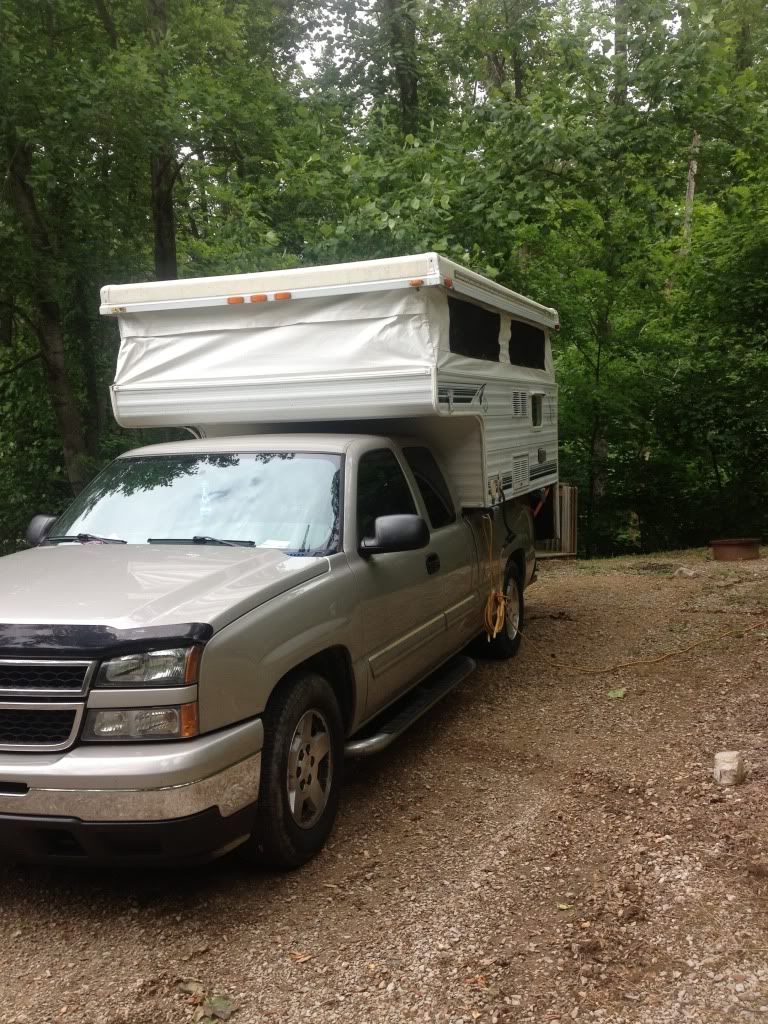Forum Discussion
24 Replies
Sort By
- Passin_ThruExplorerI am not going to argue with all of you as I only have 2.4 million miles, majority w/airride. Let all the air out, adjust for load height. Then you can add air, usually takes about 30-35 lb, your mileage may vary. Test to see if you feel like they are working. When you are runing w/o the trailer, load tp 20-25 for a decent ride, you'll be able to tell because it will jar your bones if it's not right. I ahve always done my WDH first. Watch for me and Yoda with my Arctic Fox, he rides on the back stairs and waves at everyone.
- goducks10ExplorerLoad up the slide in camper and all gear you take in the truck, air up the bags to return to desired height. Hitch up TT, attach WD bars and adjust truck again with WD bars.
- popeyemthExplorerCorrect we don't need bags for the Travel Trailer
They were put on to level the truck with an 8 ft slide-in on a 6.5 bed
- WishinExplorerIt sounds like you really don't need the air bags for the travel trailer. If true,then just put 10 psi in the bags before you adjust your hitch and leave the pressure at 10 psi. If you feel you want to add air later, you'll then need to re-adjust the hitch to make sure you're putting enough weight back on the front axle. Pumping up the air bags after the hitch is adjusted will reduce the effectiveness of the w/d hitch which is why you need to re-adjust the w/d hitch if you change the air pressure.
- popeyemthExplorerThe ride and handling were fine with our previous camper before we got the bags so should not change with another of about the same hitch weight.
10 PSI is not much so I hope it won't interfere - Trial and error. Start with the minimum 10 lbs in the air bags. You need that so you do not damage the airbags. Then adjust the hitch. If the ride and handling are good you are fine. You can put whatever air you want in the bags as long as you adjust the hitch afterwards. Just like every vehicle you attach that hitch to may have different suspension abilities.
- TerryallanExplorer II
chevor wrote:
I don't think so. I see it like this: A weight distribution hitch is used to prevent weight fluctuation at the hitch point while the combination is in motion and shouldn't be used to keep the front tires of the tow vehicle on the ground at stand still. If your to that point the vehicle is overloaded.
Airbags dampen sudden rear axel weight fluctuations. They tend to be more effective the heavier the vehicle is.
Actually. A WDH is designed to return lost weight to the front end. Thus returning steering control, and stability, and eliminating sway.
That is what it does. It distributes weight to the front axle, and to the trailer axles. IF no weight is returned to the front axle. The WDH is NOT adjusted correctly, and is not doing it's job. - chevorExplorerI don't think so. I see it like this: A weight distribution hitch is used to prevent weight fluctuation at the hitch point while the combination is in motion and shouldn't be used to keep the front tires of the tow vehicle on the ground at stand still. If your to that point the vehicle is overloaded.
Airbags dampen sudden rear axel weight fluctuations. They tend to be more effective the heavier the vehicle is. - Bob_LandryExplorer
Rumblejohn wrote:
The WDH's primary function is to distribute the weight. With that done correctly using a set of scales to get your axle weight right, your truck should be close to level. So the 10psi minimum inflation pressure should be right(do this first).
Just my $.02
The purpose of WD is to return the correct amount of weigh to the front end, not level the truck. If the truck ends up level, that's a bonus, but it's unlikely that it will. - RumblejohnExplorerThe WDH's primary function is to distribute the weight. With that done correctly using a set of scales to get your axle weight right, your truck should be close to level. So the 10psi minimum inflation pressure should be right(do this first).
Just my $.02
About Travel Trailer Group
44,031 PostsLatest Activity: Mar 12, 2025